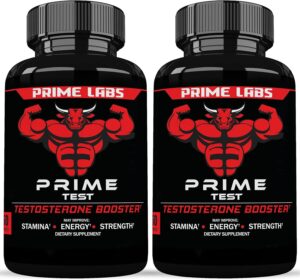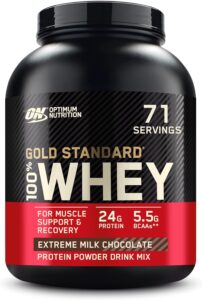
Henry Cavill, born on May 5, 1983, in Saint Helier, Jersey, Channel Islands, is a British actor renowned for his role as Superman in the DC Extended Universe. His journey from a young aspiring actor to one of Hollywood’s most iconic superheroes is a tale of dedication, perseverance, and exceptional talent. Cavill grew up in a close-knit family, being the fourth of five boys. His early education was at St Michael’s Preparatory School in Saint Saviour, before moving to Stowe School in England.
Before making it big in Hollywood, Cavill had his fair share of struggles, taking on various smaller roles in films and television. His breakout role came in 2007 when he was cast as Charles Brandon, 1st Duke of Suffolk, in the Showtime series “The Tudors.” However, it was his casting as Superman in Zack Snyder’s “Man of Steel” (2013) that catapulted him to international fame. Beyond his acting career, Henry Cavill is known for his deep passion for fitness, gaming, and his beloved dog, Kal. Cavill’s fitness journey, particularly his transformation into the Man of Steel, has inspired many fans and fitness enthusiasts worldwide. His commitment to embodying Superman, both physically and mentally, is evident in the rigorous training regimen he undertakes.
Henry Cavill’s transformation into Superman required more than just donning a cape; it necessitated an intensive workout regimen designed to build a superhero physique. Under the guidance of renowned trainer Mark Twight, who has worked with actors for roles in films like “300” and “Justice League,” Cavill underwent a grueling training program. The Superman workout focuses on building functional strength, increasing muscle mass, and enhancing overall athletic performance.
Phase 1: Foundation Building
The initial phase of Cavill’s workout routine was all about building a solid foundation. This involved basic strength training exercises to prepare his body for more intense workouts. The foundation phase included:
– Compound Movements: Exercises such as squats, deadlifts, bench presses, and pull-ups. These movements target multiple muscle groups, promoting overall strength and muscle development.
– Functional Training: Incorporating movements that mimic real-life activities to improve overall body coordination and endurance.
– High Repetitions: Using moderate weights with higher repetitions (12-15 reps per set) to build muscular endurance and prepare the body for heavier lifting.
Phase 2: Hypertrophy and Strength
Once the foundation was set, Cavill moved on to the hypertrophy phase, which focuses on muscle growth and increasing strength. This phase included:
– Split Routines: Dividing the workout into different muscle groups (e.g., chest and triceps, back and biceps, legs, shoulders) to target specific areas for growth.
– Progressive Overload: Gradually increasing the weight lifted to continuously challenge the muscles, promoting growth and strength.
– Super Sets and Drop Sets: Techniques to maximize muscle fatigue and growth by combining exercises without rest (super sets) or decreasing weight after reaching failure (drop sets).
Phase 3: Functional Strength and Conditioning
The final phase of Cavill’s training was designed to enhance functional strength and conditioning, ensuring he could perform physically demanding stunts and action sequences. This phase included:
– High-Intensity Interval Training (HIIT): Short bursts of intense exercise followed by rest or low-intensity periods to improve cardiovascular fitness and burn fat.
– Circuit Training: A series of exercises performed in a sequence with minimal rest, targeting different muscle groups and enhancing endurance.
– Plyometrics and Agility Drills: Exercises such as box jumps, burpees, and sprints to improve explosive power and agility.
Nutrition and Recovery
Cavill’s transformation wasn’t solely reliant on his workouts; nutrition and recovery played crucial roles. His diet was meticulously planned to support muscle growth and overall health. Key components included:
– High Protein Intake: To support muscle repair and growth, Cavill consumed a high-protein diet, including sources like chicken, fish, lean beef, eggs, and protein shakes.
– Balanced Macronutrients: Ensuring a balanced intake of carbohydrates for energy and healthy fats for overall well-being.
– Meal Timing: Eating multiple smaller meals throughout the day to maintain a steady supply of nutrients and support metabolism.
Recovery was equally important in Cavill’s regimen. Adequate sleep, stretching, foam rolling, and regular massages helped prevent injuries and ensured his body could handle the intense training.
Henry Cavill’s transformation into Superman is a testament to his dedication and hard work. Under the guidance of renowned trainer Mark Twight, Cavill followed a rigorous and comprehensive training regimen. This program was meticulously designed to cover all aspects of physical fitness necessary for embodying a superhero, focusing on three key areas:
1. Strength: Cavill’s regimen included heavy compound lifts like squats, deadlifts, and bench presses, which are essential for building foundational strength. These exercises target multiple muscle groups, promoting overall muscular development and power.
2. Hypertrophy: To achieve the muscular physique iconic to Superman, Cavill engaged in hypertrophy training. This involved high-volume workouts with moderate to heavy weights and a higher number of repetitions, aiming to increase muscle size. Techniques like super sets and drop sets were used to maximize muscle growth and endurance.
3. Functional Conditioning: Beyond just looking strong, Cavill needed to move like a superhero. His training incorporated high-intensity interval training (HIIT), circuit training, and plyometrics to enhance his cardiovascular fitness, agility, and explosive power. These exercises ensured he could perform the dynamic stunts and action sequences required for the role.
Cavill’s success was not solely due to his training; it was also significantly supported by a well-planned diet and recovery strategy:
– Diet: His nutrition plan was carefully balanced, with a high protein intake to support muscle repair and growth. He consumed a mix of lean proteins, carbohydrates, and healthy fats, ensuring he had the energy and nutrients necessary for his intense training sessions. Meal timing was also crucial, with multiple smaller meals throughout the day to maintain energy levels and support metabolism.
– Recovery: Recognizing the importance of recovery, Cavill incorporated strategies like adequate sleep, stretching, foam rolling, and regular massages. These practices helped prevent injuries and allowed his body to recover and adapt to the strenuous workouts.
Cavill’s journey to becoming Superman serves as a powerful example of what can be achieved with determination and the right approach. His transformation inspires fans and fitness enthusiasts worldwide, demonstrating that extraordinary physical goals are attainable with consistent effort, a structured training program, and a balanced lifestyle.










